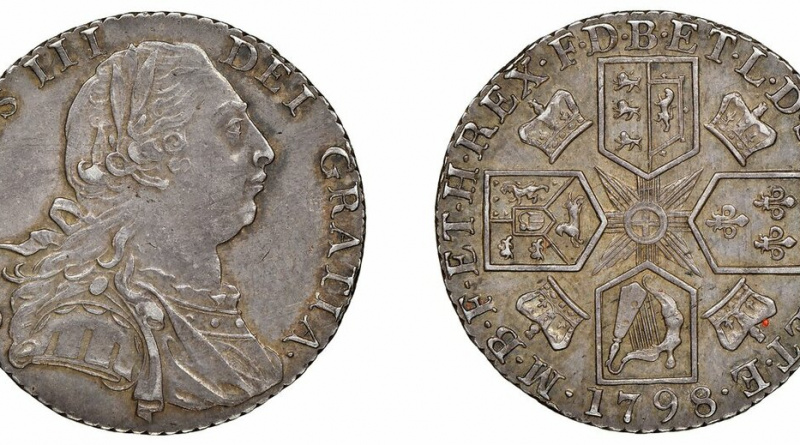George III “Dorrien Magens” shilling
The name for these shillings and their scarcity is tied up with the production of silver coinage and bullion prices in the 18th century.
Historical background
The minting of silver coinage had virtually stopped in the second half of the 18th Century as the bullion price had remained above the coinage price of 62d. The majority of the bullion arriving at the mint was captured silver, such as Vigo in 1702 and Lima in 1745. At the start of George III’s reign in 1760 silver coinage was scarce. Crowns and halfcrowns were particularly suited to melting down or hoarding and had virtually disappeared from circulation.
There were small issues in 1762 and 1763, mainly of threepences and in 1787 some shillings and sixpences. These, however, were not intended for general issue but merely for the customers of the Bank of England that wished to have new silver coins at Christmas. Eleven years later, nearly half were still in the Bank’s vaults and their lack of use is reflected in the unworn condition of so many of the surviving pieces. By 1797 the situation had become so bad that the government, under Pitt, had started issuing countermarked Spanish dollars.
Dorrien Magens
A favourable balance of trade in 1797 saw an influx of bullion which took its price temporarily below the coinage price of 62d by early 1798. This prompted a group of London bankers to take bullion to the Mint for coining. Dorrien Magens was the first to deliver bullion to the mint and his silver was the first to be melted. He was also was the most vociferous about getting paid, with the result that his name is now associated with the coinage.
Scarcity
The first delivery of bullion was made on 4 April 1798 and preparations for the new coins began. However, a few weeks later on 10 May a message was sent from the government that the coinage should be stopped. They were concerned that fluctuating bullion prices would lead to the new coinage being melted down again and they were already considering a change to the weight standard of silver coinage. At this stage only some of the silver had been minted into coins.
It wasn’t until July 1799 that the Mint delivered this silver, now remelted into ingots, to the Bank of England. Between 10 May 1798, when work stopped, and July 1799, it is thought that some 285 pieces may have gone astray. Nothing like that number now survive. Of the few of the coins that do survive only about half a dozen are in private hands.
Ref: THE DORRIEN & MAGENS SHILLING OF 1798 by G.P.Dyer and P.P. Gaspar, 1982
.

